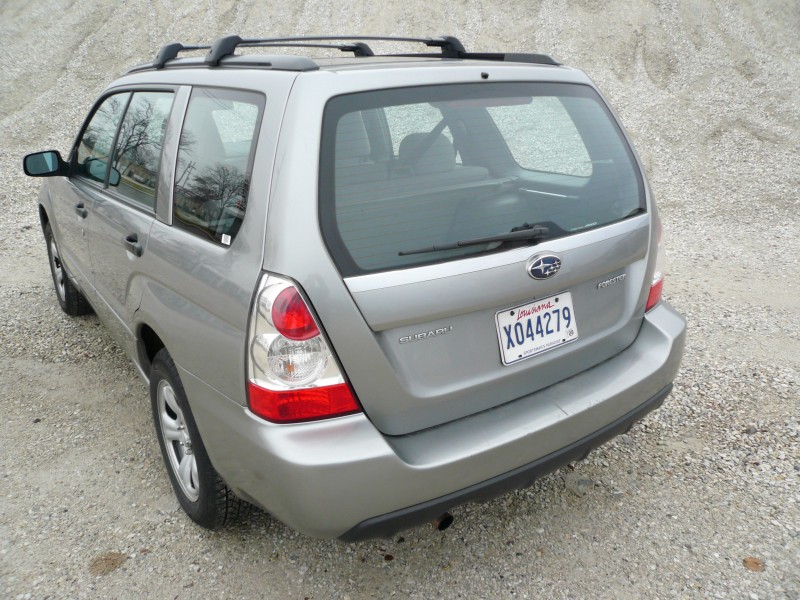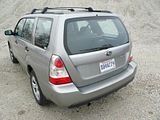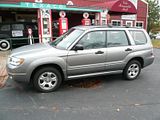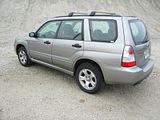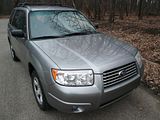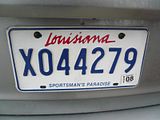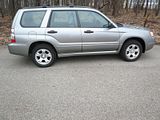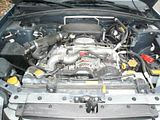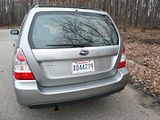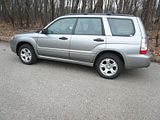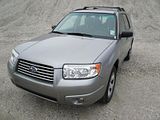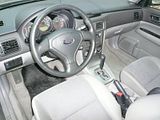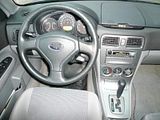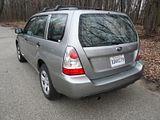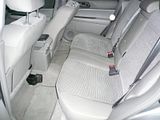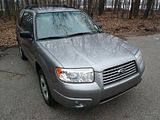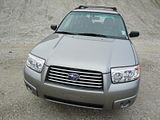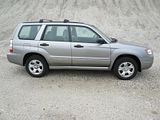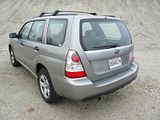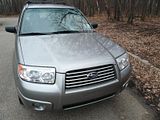Many of my US trips for work entail spending time in both Los Angeles and the Chicago suburbs, specifically the area around Schaumburg, a few miles to the west of O’Hare airport. Whilst the climate in Los Angeles does not vary that much no matter what month of the year it is, the same is not true in Chicago. Summers can be sunny, warm and a bit humid in this part of America whilst the winters are far colder than we are used to in the UK, with temperatures well below zero and several significant snowfalls a year to be expected, so whilst a January trip to Los Angeles is one to be relished, there can be quite a shock to the system when getting off the plane at O’Hare airport, even though the warm clothes that seemed redundant in California are now being warm. My January 2008 trip was indeed one of these two destination ones, so after a week of winter sunshine, I was braced for winter. I arrived at O’Hare airport in the evening, and it was cold and crisp. There was no snow in sight, but the forecast suggested that it would likely arrive before my planned departure. So when the Hertz agent offered me an all-wheel drive car, I thought it was perhaps a good idea to take it. Everyone is much better prepared for snow in Chicago than we are in the UK, but even so, I thought it a wise precaution. As the car on offer was something I’d not driven before, it seemed like it hit two objectives in one go. So I signed up to a 2007 model year Subaru Forester, which I found in the expansive Hertz parking facility a few minutes later. It had Louisana plates on, so was a long way from base, and slightly worryingly, the carpet in the boot was stained with red and a bit of blue, which looked like it could be blood stains. Anyway, I checked the rest of the car, put my luggage in it and made the short and familiar journey to the hotel in Arlington Heights, reserving full judgement for the following day which being a Sunday would allow me to be in tourist mode.
Subaru still do things differently from other manufacturers, and that goes beyond the standard all-wheel drive that is a feature of all their cars. They also all use horizontally-opposed engines, which Subaru will tell you give advantages of being both smoother and because of the form factor of the engine, sitting much lower in the car, the weight is lower down thus endowing them with better handling than many rivals. Getting in the Forester, there was certainly no doubt about the “boxer” engine, as it sounds very different from any traditional in-line four. In the case of the US market Forester that four is of 2.5 litres in capacity and in normally aspirated guise, which was the case for the test car, that means 173 bhp and 166 lb/ft of torque. You would think that this should be ample to make the Forester decently brisk, but it never really felt that way. I think the problem was not so much the engine as the four speed automatic gearbox to which it was coupled. The two just seemed ill-matched. The transmission struggled to work out when to change up as you gained speed. Sometimes it would hang onto a gear til almost the red line, which was a very noisy and frenetic experience, and other times it would take the easy route out and change up far too early thus meaning that the Subaru struggled to pick up speed with any semblance of urgency. Either way, the result was that the car was noisy too much of the time, though things did quieten down when you reached a steady speed. There was nothing particularly special or noteworthy about the other driving dynamics. My notes refer more to how easy the car felt to drive. Its compact size, and generously sized glass house made it easy to place on the road and to manoeuvre. Steering and handling were nothing special, but then making this feel like a sports car was probably not in the minds of the engineers. The snow that was forecast did not materialise, so I did not get the chance to sample the car in wintry conditions, but in the rather grey and dreary conditions whilst I had the car, it was not tested in the way it otherwise might have been. At least the ride is suitably pliant, making the car comfortable on the generally well-maintained roads of Illinois. Perhaps the most disappointing aspect of the driving dynamics were the brakes which were mushy beyond belief. It was necessary to stamp hard on the pedal to achieve a complete retardation of the car, though with this amount of pressure applied, they always did bring the Forester to a halt. A traditional pull-up handbrake is fitted between the seats.
The interior is traditional Subaru. That means “low rent”. There’s a whole lot of ghastly pimpled plastic, which lines a large part of the doors and the centre of the dash. The rest of the dash is finished in plastic of barely better quality, and in three different shades of grey in the case of the test car . Even the key and fob is a very cheap and nasty feeling thing. The steering wheel is a plastic moulded item. There are three dials grouped together under a single binnacle, the left most of these housing both water temperature and fuel level. They are clearly marked and easy to read. Twin column stalks are used not just for the indicators and wipers but also the lights. There are no buttons at all on the steering wheel boss. The centre of the dash has two air vents uppermost and then below this is the rather small audio unit which proved a bit fiddly to operate, not least because it is set down quite low. Rotary dials beneath this are used for the air conditioning. and that’s it, all pleasingly simple to use.
Seat upholstery in the test car was cloth, with a sort of velour outer to the seats with a slightly patterned central insert in a different sort of material. You adjust the seat manually, with a bar under the cushion for fore/aft and levers on the side for backrest rake and seat height. The column has a telescoping adjustment to it. There’s certainly a feeling of space here, with more headroom that you will find in a conventional estate car. I certainly felt comfortable behind the wheel, and enjoyed the good visibility from the rather boxy styling and generous glass area.
Space in the rear seats is decent, with ample leg room unless the front seats are set right back on their runners. There is a central tunnel, but it is not that intrusive. The centre console unit between the front seats does extend quite a way back, though, so a middle seat occupant here may struggle for space if they have long legs. Headroom is generous, as you might expect given the styling of the car. There is a drop-down central armrest. Luggage space is good, and a load area that is flush with the base of the tailgate means that sliding heavy loads in would be easy. Unusually for a US rental car, there was a retractable loadbay cover and there is a useful stowage area under the main boot floor. More space can be created by folding the asymmetrically split rear seat backrest down, which creates a long load platform. There are roof rails and bar as well for those who want to carry more, outside the car. Inside the cabin, those in the front are well provided with space for odds and ends. As well as the glovebox and bins on the doors shaped to accommodate a bottle, there is a lidded cubby on the top of the dash, a small lidded recess below the audio unit and a tray under the central armrest. Those in the back are not well provided for at all.
In the US market, the 2007 Subaru Forester is available with two engines: a base, normally aspirated 2.5-litre four-cylinder and a turbocharged version of that power plant. Foresters with the base engine carry a “2.5 X” designation and come in base, Sports, Premium Package and L.L. Bean trim levels. Models with the turbo engine carry a “2.5 XT” designation and come in Sports and Limited trim levels. The base Forester 2.5 X includes 16-inch steel wheels, a roof rack, air-conditioning (with cabin air filtration), a four-speaker CD stereo, full power accessories, keyless entry and a wiper de-icer. Next up is the Sports version of the 2.5 X, which adds automatic climate control and an MP3/WMA-capable stereo with an in-dash CD changer and auxiliary input jack. The 2.5 X Premium Package gains popular items like alloy wheels, a limited-slip rear differential, rear disc brakes, a sunroof, a power driver seat and front seat heaters. Step up to the L.L. Bean model to get a Forester with a self-levelling rear suspension, leather upholstery, an auto-dimming rearview mirror and sturdier plastic trim in the cargo bay. For the turbocharged models, the 226 bhp Sports 2.5 XT is equipped just like the Sports 2.5 X, but has 17-inch wheels, a limited-slip differential, rear disc brakes and electroluminescent gauges. The Forester XT Limited is equipped like the L.L. Bean model, except for its 17-inch wheels, unique instrumentation and upgraded seven-speaker audio system. Notable options on the Subaru Forester include a cargo bin, various cargo nets, splash guards, wheel locks and a rubber rear bumper cover.
I was rather disappointed by this Forester. My expectations were quite high, as the US press rate the car, and I have enjoyed other Subaru models that I have driven (only a couple of them, to date, it has to be admitted), but this one did not really hit the mark for me. Had the weather been more wintery, with snow and ice, the security and grip from the all-wheel drive would have been welcome, and had I had more people and stuff to drive around, then the innate practicality from the boxy styling would have come into its own. But neither of these challenges pertained for me and my time with the car. Instead I spent the time driving something with a mis-matched engine and transmission that was unduly noisy too much of the time, those worryingly mush brakes and with a rather low-rent interior that whilst easy to use did look and feel cheap. I suspect that there is a decent car hiding here, and maybe if equipped with the turbo engine and a manual gearbox it would be more evident, but in this spec, it really did not hit the spot for me.

